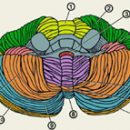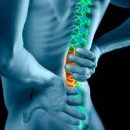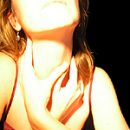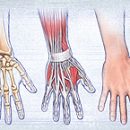Violation of movement coordination or ataxia may appear with the defeat of various parts of the nervous system, one way or another responsible for coordination of movements. Read more about Sensitive, Corkova and Vestibular Ataxia Read in the article.
Content
Ataxia is a violation of coordination of movements, developing as a result of the defeat of various structures, providing a complex coordination mechanism. The defeat can capture the nerves, with the help of which a person feels motion (sensitive ataxia), a vestibular apparatus that is responsible for maintaining equilibrium (vestibular ataxia) or a cerebral of a brain responsible for consciousness (cortical ataxia).
Sensitive ataxia develops most often when the parts of the dorsal and brain are defeated, responsible for sensitivity, less often during damage to the nerves, for which signals go. The reason for this may be the most various diseases or injuries. A person loses the idea of the position of the parts of his body in space, does not feel the direction and volume of movements. Sensitive ataxia may be static (violation of support for posture) and dynamic (violation of movements).
During sensitive attaxia sharply upset by the patient's walking, which acquires «Stamping character». When walking the foot overly bends in the knee and hip joints and the excess force is lowered to the floor. The patient has sensations «Falling» «walking vate» A huge role is played by sight, thanks to which the patient is trying to compensate for the absence of a sense of movements. With closed eyes, the symptoms of ataxia are significantly enhanced. The disorder of the sense of movement can also arise in the hands. Along the fingers of the elongated hands involuntarily change their position, making unnecessary spontaneous movements. With a severe form of sensitive attacks, the patient is not able to stand and walk.
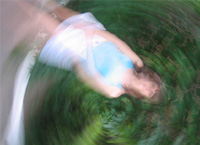 The vestibular ataxia occurs when the vestibular apparatus is defeated in any of its department. It is observed in diseases of the inner ear, encephalitis, brain tumors and blood supply disorders. The vestibular ataxia appears as an attempt to support the POSE (static ataxia) and when driving (dynamic ataxia). The severity of ataxia is intensified with a certain position of the head and the entire body, when turning the eyes. Patients avoid sharp movements head and carefully change the position of the body. With closed eyes, coordination breaks are somewhat increasing.
The vestibular ataxia occurs when the vestibular apparatus is defeated in any of its department. It is observed in diseases of the inner ear, encephalitis, brain tumors and blood supply disorders. The vestibular ataxia appears as an attempt to support the POSE (static ataxia) and when driving (dynamic ataxia). The severity of ataxia is intensified with a certain position of the head and the entire body, when turning the eyes. Patients avoid sharp movements head and carefully change the position of the body. With closed eyes, coordination breaks are somewhat increasing.
Most often one side of the vestibular apparatus suffers. For such a situation, it is characterized by steering when walking with a deviation in the affected side. If the patient is asked to go with closed eyes a few steps in a straight line back and forth, then the trajectory of his movement is constantly deviated from the source direction and resembles a star pattern.
The vestibular ataxia is combined with other vestibular disorders. As a rule, dizziness is noted: the surrounding items rotate in a certain direction, especially with some positions of the head and the whole body. Against the background of dizziness, nausea may occur, vomiting, dimming consciousness. There is a twitching eye.
Cork ataxia is mainly due to the defeat of the cerebral cortex, which is responsible for arbitrary movements, and also coordinates the work of most systems. Cork ataxia is observed in vascular diseases of the brain, including stroke, brain tumors, encephalitis.
Cork ataxia is manifested by static and dynamic coordination disorders. Changes the patient, acquiring «drunk» character. When walking the patient deviates to the side, the opposite side of the defeat. With severe defeat of the cortex of the cerebral, the patient loses the ability to stand and walk, paralysis develops. Cork ataxia is combined with other signs of lesion of the cerebral cortex: change of psyche, auditory, olfactory hallucinations, memory violations on current events, vision disorders.

